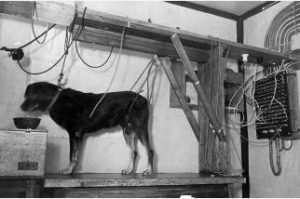 Up to the year 1870 there was no physiology of the [brain] hemispheres. They seemed to be out of reach of the physiologist. In that year the common physiological methods of stimulation and extirpation were first applied to them. Ivan Pavlov: Conditioned Reflexes: An Investigation of the Physiological Activity of the Cerebral Cortex (1927)
Up to the year 1870 there was no physiology of the [brain] hemispheres. They seemed to be out of reach of the physiologist. In that year the common physiological methods of stimulation and extirpation were first applied to them. Ivan Pavlov: Conditioned Reflexes: An Investigation of the Physiological Activity of the Cerebral Cortex (1927)
(So, what exactly is “stimulation and extirpation”, and how was it used to learn about the physiology of the brain? The concept is basic. When parts of the exposed brain (usually belonging to a dog) were stimulated, then certain groups of muscles would contract. When those same areas of the brain were cut out (extirpated), then the same muscles would no longer function.
Then it was found, by the same method, that some areas of the brain were not linked to muscles. When these areas were cut out, other functions were lost, like with the retina of the eye, or the sensory nerve-endings in the skin.)
Searching investigations have been made, and still are being made, by numerous workers on this question of localization of function in the [brain]. Our knowledge has been increased in precision and filled out in detail, especially as regards the motor area, and has even found useful application in medicine. Ivan Pavlov
The exploration of the brain is quite intriguing, and useful. Thankfully, our techniques have moved beyond stimulation and extirpation. Today, with the use of functional Magnetic Resonance Imaging (fMRI), our knowledge is exploding rapidly. Discoveries about the architecture of the brain and the mapping of circuitry connecting various parts of the brain which work together, are beyond fascinating. A leader in this area of research is the French neuroscientist Stanislas Dehaene. He has studied the brain’s reading circuits, and he explains the process in his book, Reading in the Brain.
The Brain’s Reading Circuit
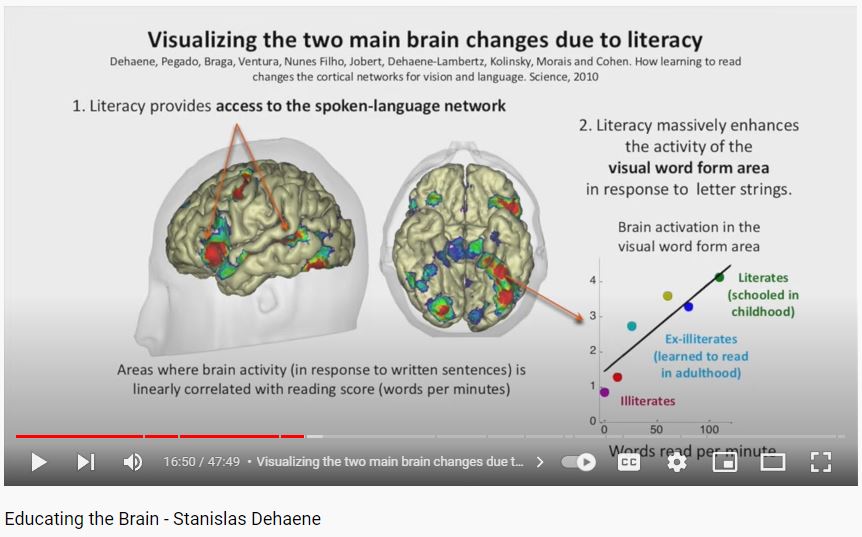 For more than twenty years, functional brain imaging techniques have revolutionized the study of the human brain by literally allowing us to ‘read in the brain.’ Their enormous potential lies in their capacity to visualize brain activity directly, at the very moment when a human volunteer performs a mental operation like reading. Stanislas Dehaene: Reading in the Brain: The Science and Evolution of a Human Invention, 2009
For more than twenty years, functional brain imaging techniques have revolutionized the study of the human brain by literally allowing us to ‘read in the brain.’ Their enormous potential lies in their capacity to visualize brain activity directly, at the very moment when a human volunteer performs a mental operation like reading. Stanislas Dehaene: Reading in the Brain: The Science and Evolution of a Human Invention, 2009
Through the use of MRI scanners, Dehaene discovered which areas of the brain are activated as readers and non-readers read. His studies have verified the findings of those early eye surgeons and their study of autopsies. His pioneering advances in the science of how we learn have inspired many other research projects around the world, and it is through this relatively new realm of science that we are finally able to see and understand how our brains read. Scientists are now even able to explain the differences between reading instruction methods, and their competitive advantages from the brain’s point of view. This new knowledge is being used to train reading teachers.
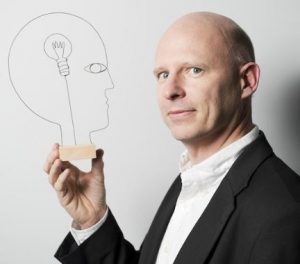 Dehaene describes the brain’s ability to read, something like this: When the alphabet was invented, it became necessary to teach our brains to read. Like any new skill, we had to carve out pathways through related brain areas, apply new information, and practice what we were learning.
Dehaene describes the brain’s ability to read, something like this: When the alphabet was invented, it became necessary to teach our brains to read. Like any new skill, we had to carve out pathways through related brain areas, apply new information, and practice what we were learning.
In other words, we were given the alphabet, and in order to read, we needed to first learn how this new tool worked. Those who learned how to use the alphabet taught others, like seasoned mechanics teaching how an engine works, from under the hood of the car. This handing down of knowledge has traveled through time to the present day. Finally, the process of learning to read is being seen and studied in technological laboratory settings.
Interestingly, the area of the brain which was found to be lesioned in Hinshelwood’s patients with acquired word-blindness (the left angular gyrus), is now seen as a part of a complex reading network. Dehaene has identified the brain regions which are involved in the reading process and describes how they are interconnected. (I recommend googling his lectures online.) The process of reading travels through the brain as though it were on an assembly line.
In a layman’s rough analysis of this process, there are pathways leading to areas where the brain analyzes pronunciation and articulation, there are roads to brain dictionaries which discern and record meanings, there are routes to storage facilities. As the reader learns, the connections between these designated, specialized, brain areas become stronger. Circuits are formed as the brain connects the paths. When information travels across these circuits, the pathways are strengthened.
The same fMRI technology has also shown that the brain regions which are activated during the reading process, are also activated very early-on when babies listen to spoken words, even before birth. These findings support the encouragement of parents in reading to and talking with their children, the earlier the better.
Reading development is supported by the process of becoming aware of spoken sounds, of hearing and manipulating them in the brain, before letters have been introduced, and even before uttering a word. Early activity in this brain region fosters a faster grasp of the phonics code. The amount of time the child spends listening to spoken language corresponds with the speed of future decoding. For this reason, scientists are recommending the teaching of phonemic awareness as a prerequisite to phonics reading instruction.
Dehaene Explains More about How we Learn
Dehaene has gone further into his understanding of how we learn, and how to create the best environments, attitudes, and behaviors for learning. In his book How We Learn: The New Science of Education and the Brain (2020), he summarizes his findings in a list of recommendations for optimizing the effects of teaching. Hopefully, these ideas along with new knowledge he has presented about how the reading brain works, will begin to make their way into classrooms around the world.
For example, Dr. Dehaene tells us not to underestimate children, and to recognize and exploit the huge learning potential of a newborn brain. He explains the importance of tactics such as a rich learning environment for the child, recommending the use of games, storytelling, and puzzles, answering their questions, and using a rich vocabulary with clear pronunciations when speaking to them. Dehaene also describes attention, which he calls the “gateway to learning”.
Teachers should become masters at capturing their students’ attention and directing it to what matters. This implies carefully getting rid of any source of distraction: overly illustrated textbooks and excessively decorated classrooms only distract children from their primary task and prevent them from concentrating.
Dehaene also highlights the importance of encouraging and challenging learners, as well as setting clear learning objectives. Practice (repetition) is extremely important and, surprisingly, so is sleep.
Sleep is an essential ingredient of our learning algorithm. Our brain benefits each time we sleep, even when we nap. So, let us make sure that our children sleep long and deep. To get the most out of our brain’s unconscious night work, studying a lesson or rereading a problem just before falling asleep can be a nifty trick. And because adolescents’ sleep cycle is shifted, let’s not wake them up too early.
Dehaene also breaks the process of learning into four pillars. These, stated briefly, are:
Attention, which amplifies the information we focus on.
Active Engagement, an algorithm also called “curiosity,” which encourages our brain to ceaselessly test new hypotheses.
Error feedback, which compares our predictions with reality and corrects our models of the world.
Consolidation, which renders what we have learned fully automated and involves sleep as a key component.
Attention, Active Engagement, Error Feedback & Consolidation
Science-informed teaching is only half of the equation. Let’s consider the other side. If laboratory scientists can inform field workers, how about tutor-informed scientific research? Arguments have been waged throughout the last century in a conflict which has been called “The Reading Wars”. These conflicts have been, largely, between field scientists (tutors) and statistical examiners (university research teams). Let me explain.
 Field science might be best seen through the experiences and work of individuals such as Jane Goodall. This branch of science is sometimes called naturalistic observation. Goodall spent decades in the field, studying how chimpanzees live (attention). The field became her laboratory and her observations led her to create, test and evaluate ever expanding hypotheses (active engagement). Watching similar behaviors, repeatedly, became her scientific method. Simply stated, she learned by watching and interacting with the animals, testing hypotheses as they struck her, and remembering and recording those observations, to be re-examined in similar field experiences.
Field science might be best seen through the experiences and work of individuals such as Jane Goodall. This branch of science is sometimes called naturalistic observation. Goodall spent decades in the field, studying how chimpanzees live (attention). The field became her laboratory and her observations led her to create, test and evaluate ever expanding hypotheses (active engagement). Watching similar behaviors, repeatedly, became her scientific method. Simply stated, she learned by watching and interacting with the animals, testing hypotheses as they struck her, and remembering and recording those observations, to be re-examined in similar field experiences.
Babies become field scientists in their own sort of way, as they begin to explore more and more deeply into their ever growing environments (attention), as they move from rolling to crawling to walking (active engagement). They test their own hypotheses in their own little brains asking questions like, “What happens when I push this button?”, then after pushing that button, they observe the results (error feedback). Babies are forever collecting data and recording it in their memories. And as they sleep, the lessons they learned throughout the day’s explorations are reviewed and organized in their minds as they sleep (consolidation).
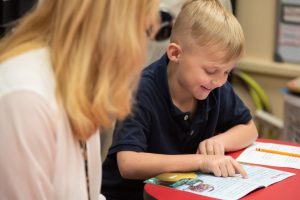 Another example of a field scientist is the reading or math tutor. Imagine these dedicated individuals who show up at homes, in classrooms, or even invite struggling learners to their own homes. As they teach, they observe, experiment, and evaluate outcomes, while collecting their own sort of data. In other words, they observe learners, recognize problems, and try interventions, which they then accept or reject as they receive error feedback. This data is rarely stored in laboratories, to be compared with similar data. There is seldom time to even record it. As soon as one student leaves, another arrives. Yet, information gained during tutoring sessions is consolidated in the brains of tutors, where it is stored away to be used with other students who bring similar problems.
Another example of a field scientist is the reading or math tutor. Imagine these dedicated individuals who show up at homes, in classrooms, or even invite struggling learners to their own homes. As they teach, they observe, experiment, and evaluate outcomes, while collecting their own sort of data. In other words, they observe learners, recognize problems, and try interventions, which they then accept or reject as they receive error feedback. This data is rarely stored in laboratories, to be compared with similar data. There is seldom time to even record it. As soon as one student leaves, another arrives. Yet, information gained during tutoring sessions is consolidated in the brains of tutors, where it is stored away to be used with other students who bring similar problems.
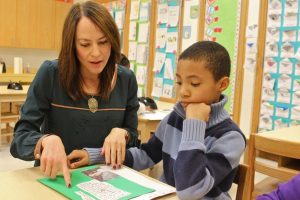 Although the tutor’s ever-increasing knowledge may not be recorded, it is still preserved. Students often become tutors, teaching in ways which they have been successfully taught, and the data banks are passed from brain to brain. Yet, the data rarely arrives on paper or in medical journals.
Although the tutor’s ever-increasing knowledge may not be recorded, it is still preserved. Students often become tutors, teaching in ways which they have been successfully taught, and the data banks are passed from brain to brain. Yet, the data rarely arrives on paper or in medical journals.
In an ever demanding scientific world this unpublished data, is rarely considered credible. There is no scientific peer review. That is, unless you observe the delight of previously troubled parents and caregivers, as the anxiously watch and wait for the outcomes of tutoring sessions. And the delight they express when their previously struggling loved ones finally catch on to reading or math, thus proving wrong the warnings of nay-sayers who had little confidence in the ability of those children to learn. Unfortunately, those types of data are usually dismissed as anecdotal, which is not always honored in scientific circles.
Field-Informed Science?
What would happen if neuroscientists were to leave their laboratories and visit the field, where they could observe working tutors as they apply individualized, field tested interventions? Could the interventions be taken from the field into the laboratory, and be tested with fMRI technology?
For example, the stories of Dr. and Mrs. Samuel Orton have been preserved in university archives. The previously mentioned 3200 case studies are available for examination. Various reading instruction methodologies have been explored and recorded there. Interventions have been applied, observed, and evaluated in these studies.
Let’s consider the multisensory approaches to teaching which have been put forth through the work of the Ortons. Why and how do they work? What changes can be seen in brain scans when additional senses become involved during reading instruction. It may be difficult to observe the impact of movement within the confines of a sensitive MRI machine. Yet it is not difficult to suppose that creative researchers may ultimately find ways to help the MRI technology to adapt to the performance of a wider range of examinations.
Here’s an example. Suppose that a reading tutor stumbles across some unexpected intervention. Maybe he notices that when classical music is played in the background, while he is teaching reading, it seems to have a positive impact on some students. Or perhaps other students become successful at improving their fluency when they read along with rap music. Can we take these interventions into the lab? Can we look into the brains of these students as they light up in various regions and make connections to other parts of the brain. Will we observe the involvement of additional brain regions? Imagine the possibilities that wait to be discovered, if the discoveries of tutors can be examined by the neuroscientists in their MRI scanners.
The Impact of Emotion & Stress Upon the Brain & Learning
I’d like to send out one more idea before I leave this topic. I previously discussed the conglomeration of emotional disturbances which seem to wrap themselves around reading challenges. I gave examples of students who began with optimism and ended in despair.
 I’ve shared discussions about nurture versus nature, asking whether the poor emotional health and lack of attention is a cause or an effect of the experiences of struggling readers. Is it possible that the cause and the effect take turns, creating a vicious circle, and suggesting that the child begins in optimism, discovers his inadequacy, sometimes through bullying-types of experiences during learning, and then begins to question himself? Does he then adjust his behavior, in an effort to self-protect against this hard-to-understand enemy of learning, and fight back? Or develop a silent repertoire of cheating and deception?
I’ve shared discussions about nurture versus nature, asking whether the poor emotional health and lack of attention is a cause or an effect of the experiences of struggling readers. Is it possible that the cause and the effect take turns, creating a vicious circle, and suggesting that the child begins in optimism, discovers his inadequacy, sometimes through bullying-types of experiences during learning, and then begins to question himself? Does he then adjust his behavior, in an effort to self-protect against this hard-to-understand enemy of learning, and fight back? Or develop a silent repertoire of cheating and deception?
I also mentioned comments made by Dr. Samuel Orton and his wife, stating that attention problems are often overcome at the point when the reading ability establishes itself. Are there actually types of reading instruction and specific interventions which teach the student to expand his attention span? What about the importance of practice? What happens in the brain when training is repetitive? Do neuro-networks become stronger? Or what is the value of encouragement? How great of an impact might it have? Are there scientific methods for a deeper view of the brain? Can we see an increase of myelin through repetition?
Can ideas like these be hypothesized and tested by data crunching scientists? Can the impact of stress be seen in the brain? Hinshelwood acknowledged backward progress when a student was sick or tired. Can this be understood through scientific lenses?
In my own optimistic mind, the options are endless, and as we discover these mysterious links between learning and emotion, we will embark on the pronouncement of a new urgency, teaching educators not only what becomes known about the learning brain, but also about the power of positive reinforcement and how to avoid the devastating effects of excessive, punishing behaviors towards our students. Parents, teachers, and caregivers will learn to encourage rather than condemn.
The future holds the possibility of discovering much more knowledge than we can even imagine. The impact of scientific study, as it informs reading, is only the beginning. Imagine the possible expansion of variables waiting to be discovered in the field and then transported to the labs for their examination through this amazing new technology of scanning working brains. We have reached the day where we are now becoming informed by the brain itself. There is so much to look forward to!
by Meg Rayborn Dawson (homeschooling mom of 9)
MS, Exceptional Student Education (Univ. of W. Florida) emphasis on Applied Behavior Analysis
MA, psychology (Grand Canyon University)
Bachelor of Arts (Northwest Nazarene University)
******************************************************************************

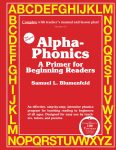
For Parents who are concerned about assuring a solid base for their Children’s education. READING is the bedrock. One good way to assure the best results is to teach your OWN children to read. And it is much easier than you ever dreamed. All you need is a good program like ALPHA-PHONICS. Alpha-Phonics has been used by tens of thousands of Parents, easily and successfully FOR 38 YEARS. Most Parents find they only need 15-30 minutes a day and can complete the course in only a few Months. Parents need NO experience or special training to teach their Children to become excellent readers. This may sound impossible, but, if you read the reviews and testimonials below, you will learn it is true.

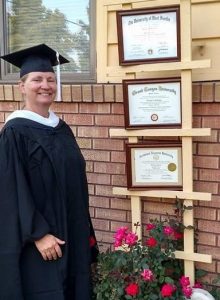
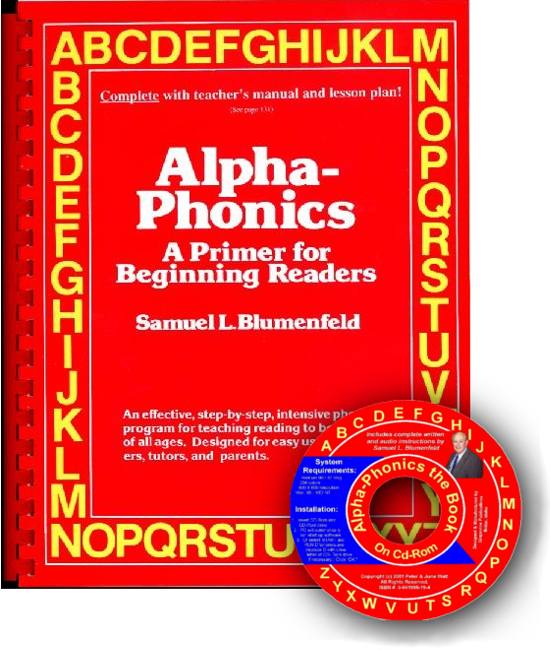 Alpha-Phonics
Alpha-Phonics The Alphabet Song!
The Alphabet Song! Water on the Floor
Water on the Floor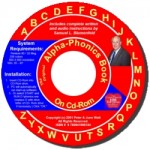 Alpha-Phonics the Book on CD Rom
Alpha-Phonics the Book on CD Rom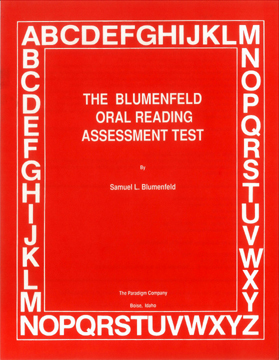 Blumenfeld Oral Reading Assessment Test
Blumenfeld Oral Reading Assessment Test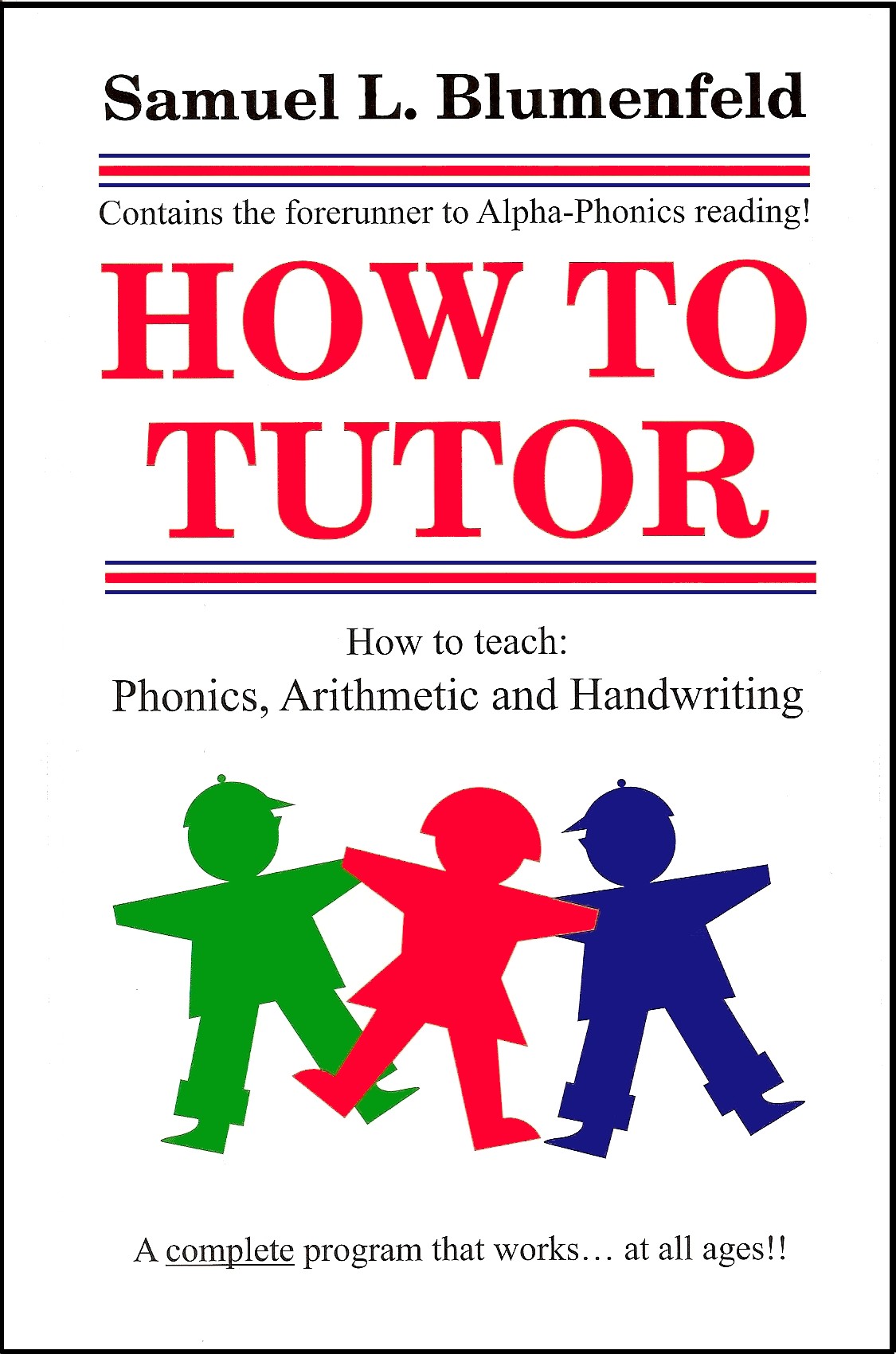 How To Tutor
How To Tutor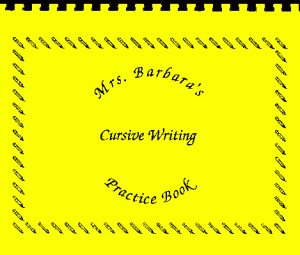 How To Tutor Cursive Handwriting Workbook
How To Tutor Cursive Handwriting Workbook
Leave a Reply
You must be logged in to post a comment.